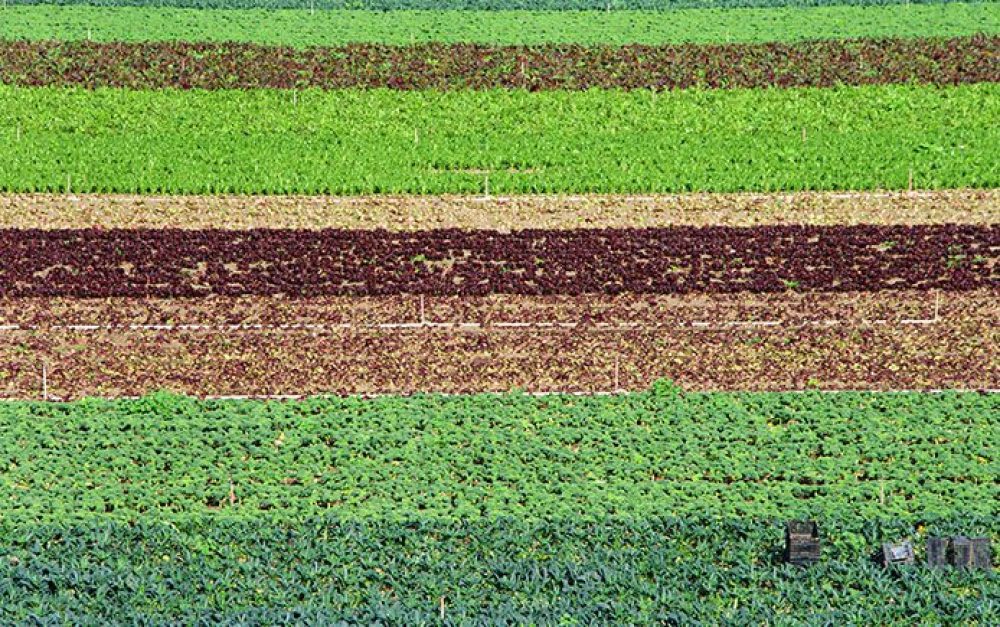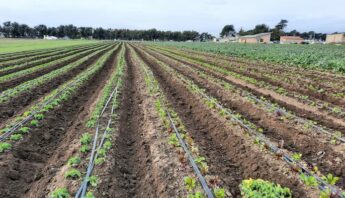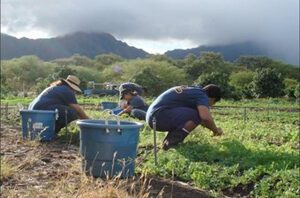A recent study found that the diversification of agricultural systems helped reduce social and ecological impacts, increase resilience to stressors and shocks, and promote social equity and ecological sustainability when compared to more simplified agricultural systems.
In a recent study, researchers explored ways that agricultural systems transformation could address challenges, including climate change, biodiversity loss, farmworker health, and global food insecurity. Through case studies on five agricultural challenges — foodborne pathogens, drought, marginal lands, labor availability, and land access and tenure — they found that the diversification of agricultural systems helped reduce social and ecological impacts, increase resilience to stressors and shocks, and promote social equity and ecological sustainability when compared to more simplified agricultural systems.
Simplification vs. diversification
There are two diverging strategies for building resiliency to potential shocks or stressors (like climate change) in agricultural systems — simplifying systems or diversifying systems. Simplifying moves agricultural production toward ecologically, socially, and economically homogeneous systems to maximize scale and production. Diversifying, on the other hand, cultivates complexity that provides ecosystem services (benefits to humans provided by the natural environment and ecosystems, such as pollination).
Diversification means that an agricultural system will be more resilient to a wide range of potential shocks and stresses that future challenges may bring. Diversification empowers people, supports ecosystem services, and promotes social equity and ecological sustainability — all while minimizing social and environmental impacts.
Simplification of agricultural systems may appear to be the solution to address agricultural challenges such as climate change, but these systems, as the study highlights, can be “narrow and brittle.” So what does that mean? Simplified farming systems reduce the ability of ecosystems to respond to stresses. The adaptive capacity that simplification offers focuses on maximizing production and externalizing impacts to surrounding communities while failing to promote resilience to a broad range of agricultural stressors.
Each of the five case studies summarized below provides insight into the ways that simplification causes more harm than good, and how diversification can create a more resilient food system. Foodborne pathogens, drought, marginal lands, labor availability, and land access and tenure are agricultural challenges that illustrate differences between diversifying and simplifying processes.
Foodborne pathogens
Foodborne human pathogens not only cause human illness, but they also harm farmers through lost sales and damage to market reputations. Simplifying agricultural systems can lead to greater risks of foodborne pathogens in livestock and produce systems. Diversifying farming systems, on the other hand, can help mitigate foodborne pathogen risks by increasing naturally occurring pathogen-suppressing ecosystem services. Diverse systems can also promote local resilience by increasing local decision-making authority to implement place-specific foodborne pathogen mitigation strategies.
Weathering drought
As climate change worsens, the intensity and frequency of droughts will increase, threatening agricultural production. Simplifying agricultural systems increases the vulnerability of farming systems to drought, especially in homogenized, intensive rainfed commodity corn and soybean systems. Diversifying pathways, including cropping system diversification and investment in soil health, crop diversity, and participatory breeding systems can promote resilience to drought.
Farming marginal land
The need for farmers to work on less-than-ideal (or marginal) agricultural land will increase as climate change continues to shift where farmable land is located and who has access to it. Simplifying agricultural systems can displace subsistence farmers with large-scale producers, and can have environmental consequences as sensitive ecological areas are monocropped. Diversifying farming systems, on the other hand, include agroecological techniques such as crop diversification and intercropping, which can increase resilience against natural disasters and food insecurity.
Dignifying labor
Agricultural workers are poorly paid and face challenging working conditions. Meanwhile, employers face shortages and instability of labor supply. Ensuring stable, healthy, and dignified farm livelihoods that support food production is essential to the future of food systems. Simplifying agricultural systems has widened the gap between owners and workers and devalued farm work. Although the extent that diversifying farms will build adaptive capacity through labor is largely unexplored, jobs in complex systems may be more socially desirable since they require more recognized skill and knowledge. Furthermore, reduced chemical exposure and possibilities for year-round employment mean improved working conditions.
Enhancing land access and tenure
The economic drivers of land use change in the United States have made it harder for farmers to own and access farmland. These issues have also made it difficult for new farmers who have the skills, aspirations, and labor needed for agricultural diversification to begin farming. Simplification has locked farmers into narrow goals of yield and profit, which pose a structural barrier to diversifying. Diversifying farming systems can be driven by also diversifying the farmers themselves, with many new and socially disadvantaged farmers being more likely to adopt new practices.
Transformation ahead
As these case studies highlight, food systems transformation is not a simple, straightforward process. Instead, it will require regionally, ecologically, and culturally appropriate diversification strategies that are specific to the challenges at hand, such as the five cases described here. Diversifying pathways are a way to incorporate both environmental and social needs to create a more resilient and adaptive agricultural system.






